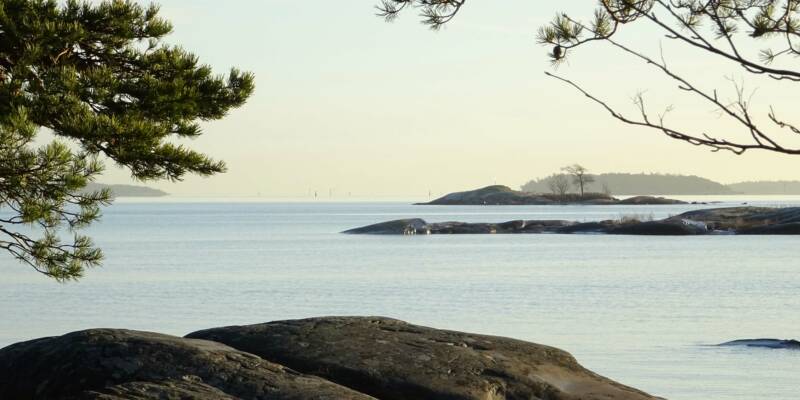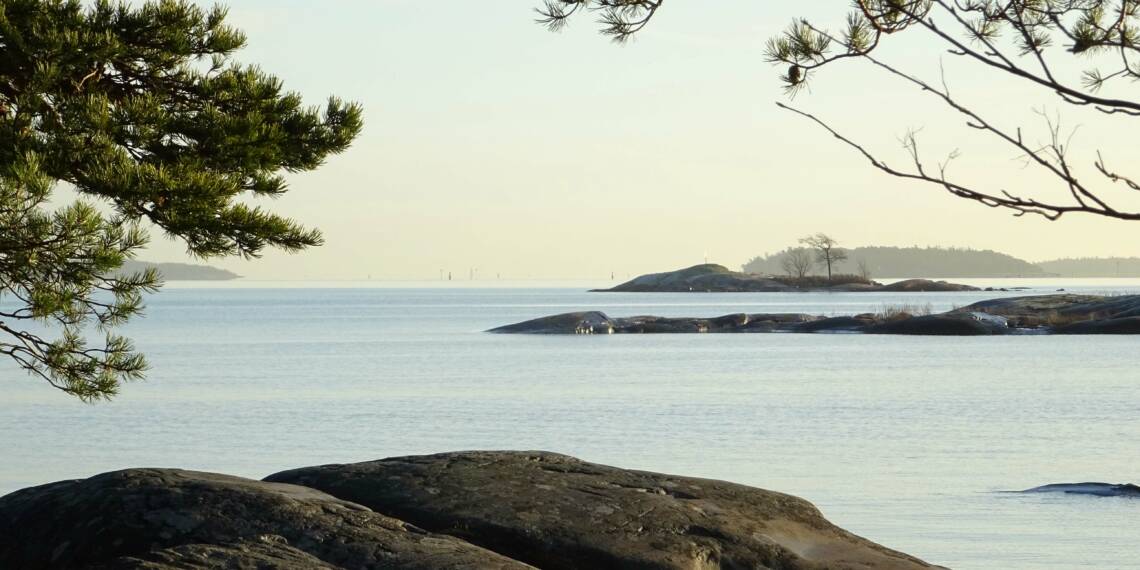
The Barösund passage is a sheltered shortcut to the inland archipelago
The Barösund fairway is an historically significant and still used waterway between Inkoo and Raasepori. Throughout the 13th century it has been a known route used to travel from the mainland west to Hanko, east towards Porkkala, and south to Tallinn.
Although the fairway is located in the inner archipelago, travelling along it shortens the boat journey considerably by avoiding having to navigate around islands through the high seas. It also provides shelter against bad weather and in poor seafaring conditions. The fairway is about six kilometres long and is only 50 metres wide at its narrowest point.
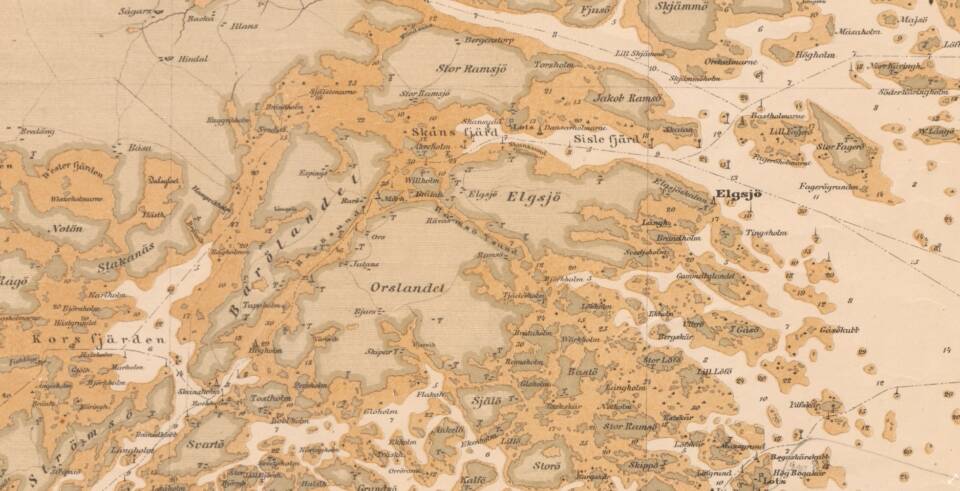
Traffic has been guided on the fairway well before official pilotage
The naturally scenic beaches of the fairway have been inhabited since at least the 16th century. The first permanent settlers were fishermen and peasants. The narrow passage was well known to the area’s inhabitants who assisted ships passing through well before official pilotage began in the 1850s.
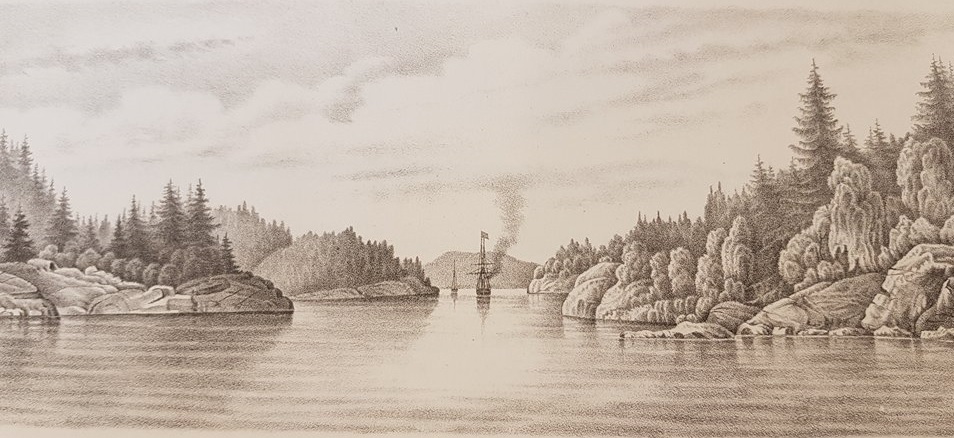
There have been several pilot stations along the route, one of which, a log hut built in 1882, has retained its original appearance to this day. Similarly, situated on a rocky peninsula the pilot hut at the eastern end of the fairway has long served as a landmark for those entering the fairway.
Along the route, the water level and the year markings have been carved into the rock shore by the pilots. In addition to piloting, sailing navigation through the narrow passage was facilitated by the use of iron rings mounted into the rocky shore along the fairway. Ships were towed through the fairway with ropes using rings cut into the bare rock. These rings are still visible today.
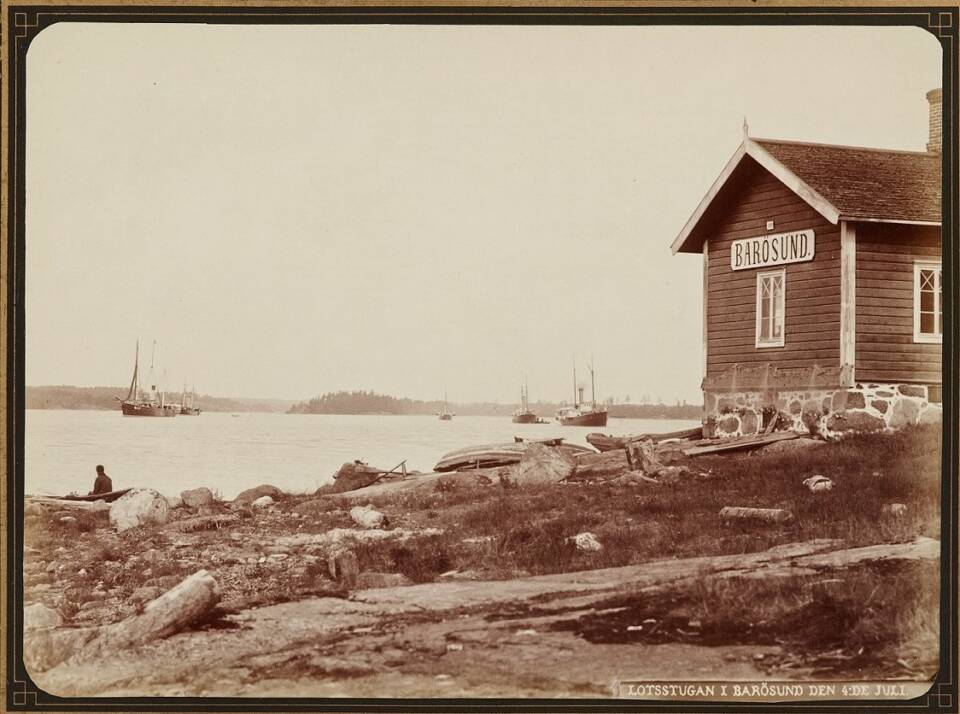
The diverse history of the fairway is evident in the surroundings
The Barösund passage was also an important passage during wartime. During the Russo-Swedish War (1788-1790), defence equipment was built along the fairway, the remains of which can still be found. In the late 19th century, people became aware of the beautiful views of the fairway and villas, boarding houses, and summer cottages were built on the beaches. When pilotage ceased in the late 1950s, the old pilot station was also put into use as a summer cottage.
With its beautiful natural and cultural scenery, the narrow strait is a wonderful attraction particularly in summer, when boat traffic on the fairway is busy. The shores of the fairway are rocky and forested in places with evergreens and some groves of broad-leafed trees, backed by meadows. The passage can be crossed by ferry to Orslandet Island. In the centre of the fairway is a service harbour with a pier, buoy mooring points and a refuelling point.
In the waters of the passage are many shipwrecked ships, as well as numerous ancient archaeological sites on the shores, which you can learn more about in the cultural environment service window.(siirryt toiseen palveluun)
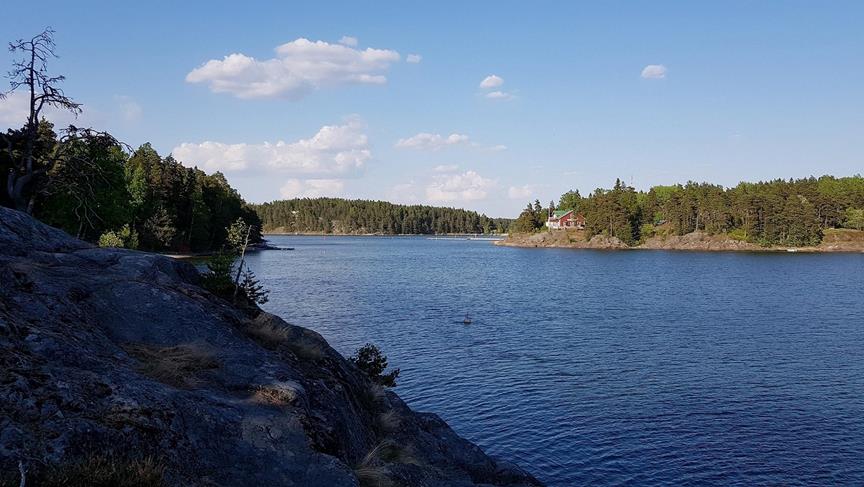
Storybox
Highjackings in Barösund
In the early 18th century, the Great Northern War caused a great deal of confrontation and unrest in Finland. In 1719, towards the end of the war, the partisan sailor Stefan Löfving and his ships visited Barösund. His provisions were exhausted, and he needed additional supplies to continue his journey.
As if on cue, he noticed some Russian barges anchored behind a nearby island, which he promptly decided to capture. Surprisingly, the ships were quickly overrun, and Stefan took their food supplies and added them to his own. He also captured two Russians who revealed that there were two other vessels anchored at the mouth of the Barösund passage. Löfving decided to hijack them too and captured goods worth 6,000 riksdaler (“dollars of the realm”).
Löfving and his crew were able to leave Barösund that evening as the wind turned in their favour. Later however, the wind turned into a storm, driving his ship aground between cliffs and a reef near Hiittinen Island. Stefan lost his own ship, its cargo and all of its weapons, and barely escaped with his own life.
Although Stefan Löfving was both a soldier and a commando, his missions were questionable: he hijacked ships and cargo, killed Russian soldiers, and worked undercover by changing disguises around the Gulf of Finland. At times, he may have even infiltratd enemy forces. His language skills helped him in his espionage, as he spoke fluent Swedish, Finnish, Russian and German.
Löfving was often in trouble, but somehow always escaped from risky situations as if by miracle. His actions were also deplored among the Finns because the Russians took their revenge out on the Finnish peasants. Eventually a warrant was issued for his arrest and he was forced to continue to sabotage the Russians in disguise. Löfving kept diaries of his adventures, which have survived to this day in the library of Porvoo high school.
Original story: Juha Ruusuvuori 2004. Itämeren merirosvot. Piraattitarinoita pohjoisesta. (Eng. Pirates of the Baltic Sea. Pirate stories from the north, 2004)
Important years
Why and how is this site protected?
The Finnish Heritage Agency has defined the entire fairway area as a nationally constructed cultural environment due to its historical significance, long history of use, and its preserved cultural landscape.
Read more about the fairway from the Heritage Agency’s pages!(siirryt toiseen palveluun)
Visit
The fairway shore is accessible by car and a car ferry regularly crosses the strait. There is also a guest harbour.
The car ferry timetable can be found here.(siirryt toiseen palveluun)
Finnish Heritage Agency’s mapservice
N: 6652928, E: 325765(siirryt toiseen palveluun) (ETRS-TM35FIN)


